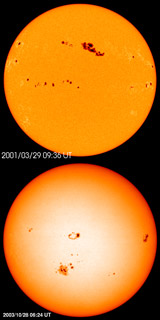These two pictures show sunspots on the Sun. Sunspots only form near the Sun's equator. They never form near the Sun's poles.
Click on image for full size
Images courtesy of SOHO/NASA/ESA.
The Sun's Poles
Earth has a North Pole, a South Pole, and an equator. The Sun does too! Some things are different at the Sun's poles from the way they are near the Sun's equator.
The Sun has a magnetic field. The Sun's magnetic field has a North Magnetic Pole and a South Magnetic Pole. About every 11 years, the Sun's magnetic poles flip. North becomes South and South becomes North.
Did you know that the Sun has spots? Sunspots are dark places on the "surface" of the Sun. The magnetic field around sunspots is much, much stronger than normal. Sunspots only show up near the Sun's equator. We never see sunspots near the Sun's poles.
The Sun is a bit like a huge ball. However, it is not a solid ball. It is a ball made of gas and plasma. Some parts of the Sun-ball spin around faster than other parts. The part near the equator spins fastest. Places near the poles spin around more slowly.
The Sun has an atmosphere. The Sun's atmosphere near the poles is different from its atmosphere near the equator. The corona is part of the Sun's atmosphere. The corona sticks out further from the Sun's surface near the equator. The corona doesn't stick out as far above the poles. The solar wind is also different at the poles. It "blows" much faster above the poles than it does above the Sun's equator.
You might also be interested in:

The force of magnetism causes material to point along the direction the magnetic force points. Here's another picture of how this works. This picture shows where the magnetic poles of the Earth are to
...more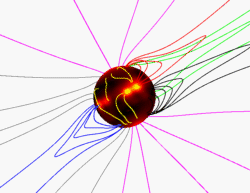
Text for this level has not been written yet. Please see the "Intermediate" text for this page if you want to learn about this topic. To get to the "Intermediate" text, click on the blue "Intermediate"
...more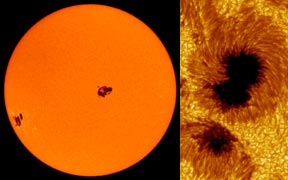
Sunspots are dark spots on the Sun. They may look small, but they are actually as bigas a planet like Earth or Mars! Sunspots are "dark" because they are colder than the areas around them. Of course, they
...more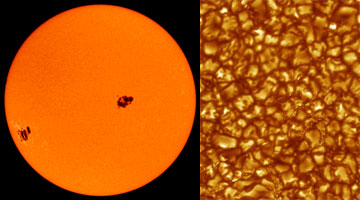
Most of the energy we receive from the Sun is the visible (white) light emitted from the photosphere. The photosphere is one of the coolest regions of the Sun (6000 K), so only a small fraction (0.1%)
...more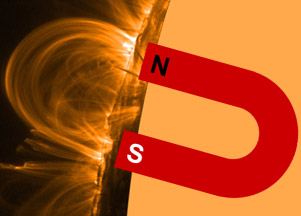
You probably have magnets on your refrigerator holding up some of your artwork or a photograph of a friend or family. Did you know that it is magnetic fields (which all magnets have) that make sunspots
...more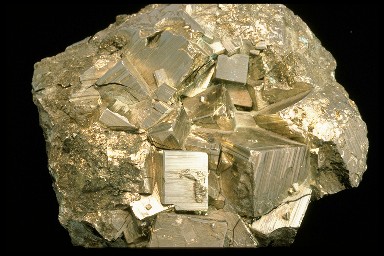
Solid is one of the four common states of matter. The three others are gas, liquid, and plasma. There are also some other exotic states of matter that have been discovered in recent years. Unlike liquids
...more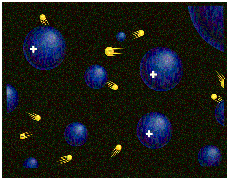
Plasma is known as the fourth state of matter. The other three states are solid, liquid and gas.Almost everything is made up of atoms (your dog, your science book, this computer...). The atom has a nucleus
...more


